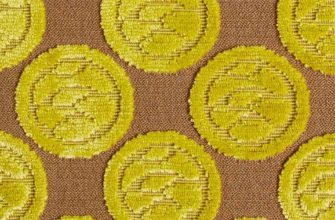How to sew a blanket from padding polyester at home with your own hands? To do this, you will need a material that will be the base, a filler to add volume, and a lining fabric. The master will need patience and diligence. A voluminous thing takes a long time to sew, but then it will serve for several years.
- What is sintepon
- Types of synthetic padding
- Types of DIY Blankets
- What material is best for a blanket?
- Necessary tools
- Cutting the material
- How to sew a quilt with piping on the edges
- Pattern for quilting
- How to sew a baby blanket for discharge
- By machine or by hand
- How to stuff a pillow with your own hands
- Caring for a synthetic padding product
What is sintepon
This is a non-woven material made from synthetic raw materials. It is produced in the form of a voluminous fluffy white fabric, the fibers of which are connected with adhesives.
For your information! Consumers ask what is correct: sintepon or sintipon. The correct word is synthetic. This is the raw material it is made of.
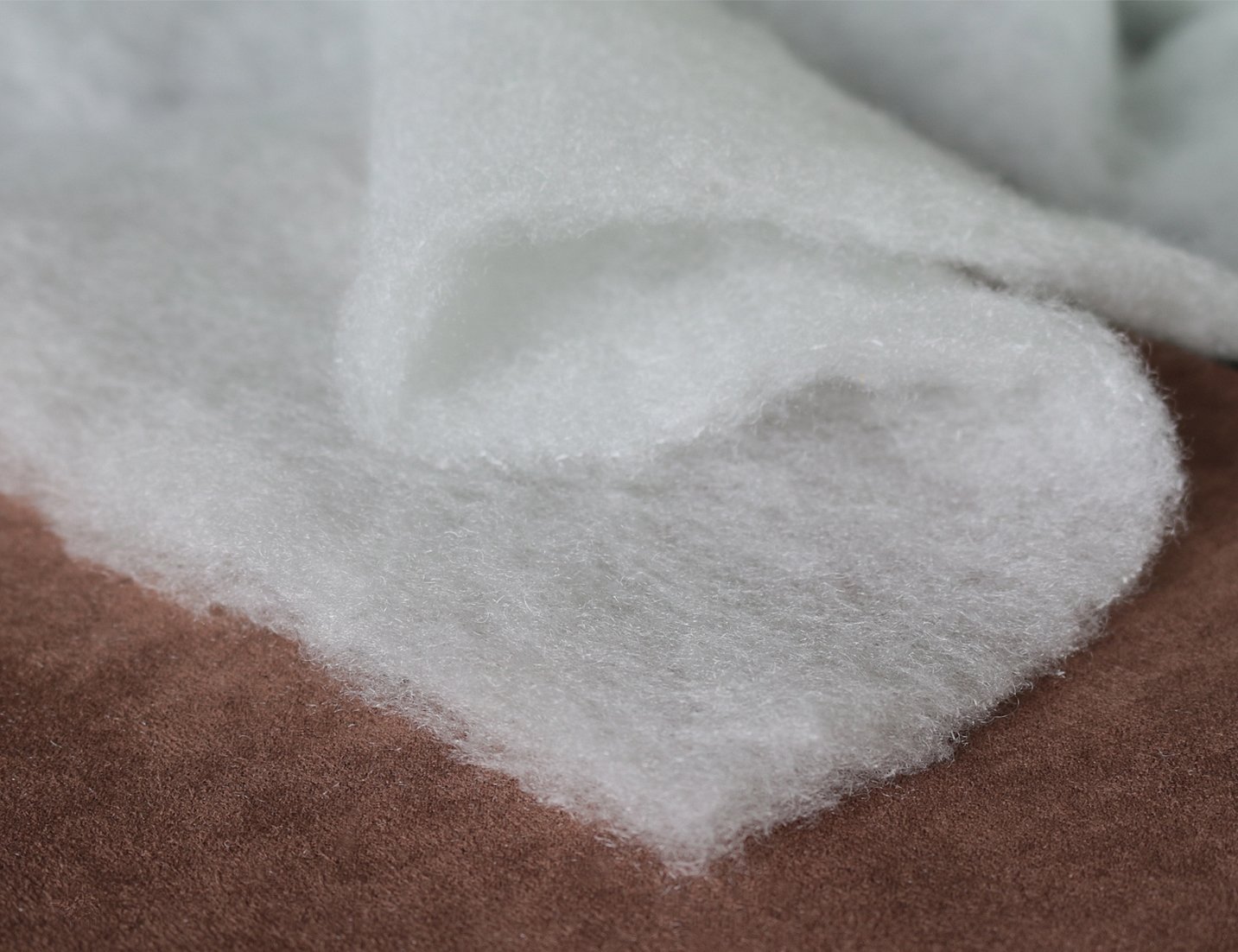
Types of synthetic padding
Sintepon comes in different thicknesses and widths. The cheapest type of this non-woven material is a 1.5 m wide strip rolled into a roll. The filler is sold by the meter. To sew a standard-sized blanket, you will need about 5 m.
The second common type is double-sided synthetic padding. The quilting of the fabric with synthetic padding is done in a factory way. The layers of filler are laid out on the lining fabric and sewn with cross stitches that create a certain pattern. These can be diamonds, squares, waves. It is used for sewing light bedspreads. Blankets made of quilting are not sewn from cheap synthetic lining, since it is unpleasant to sleep under it. Synthetic lining does not absorb moisture. Jackets are sewn from these materials.
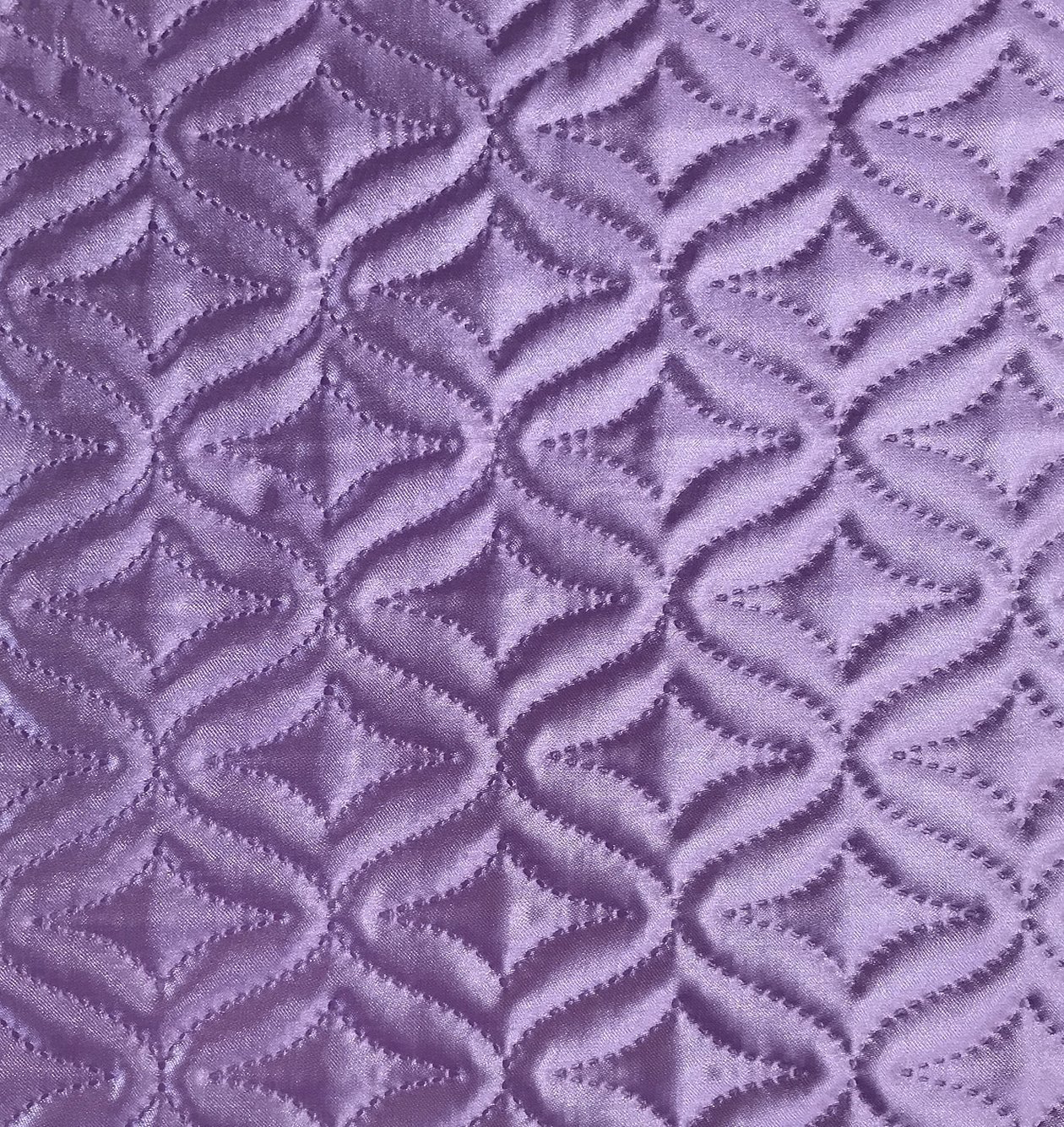
Blanket padding polyester, according to OKPD, belongs to the highest class of fillers. The material is made of high-quality raw materials that do not cause allergic reactions. The thickness of the fabric can be from 10 cm. The width for this type of filler is 2.2 m. This size allows you to collect the material in one length and not sew the panels together. It is easiest to make a blanket with your own hands from padding polyester using this type of filler.
Types of DIY Blankets
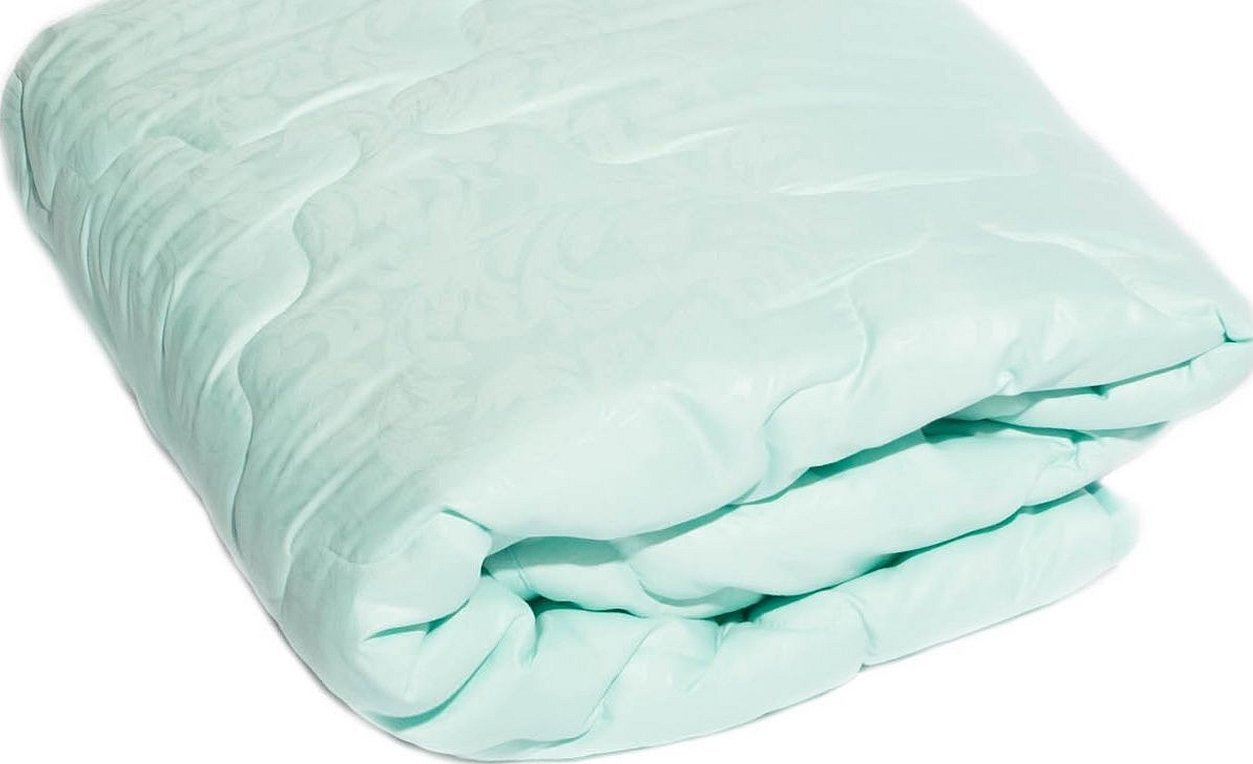
There are several common types of bedding that you can create yourself:
- The most practical are quilted blankets. Frequent figured stitching catches and fixes the filling, preventing it from bunching up.
- In addition to these, there are products sewn like old feather beds. The filler is poked into the bag-cover, and a duvet cover is put on top. Sewing a blanket from padding polyester with your own hands using this principle is simple and quick. The only drawback is that the insert inside it often gets knocked down, you have to take the cover out of the duvet cover and straighten the filler;
- A separate group includes blankets sewn from scraps of fabric and synthetic padding into separate small pillows, which are then connected together.
What material is best for a blanket?
Only natural or blended fabrics with a small amount of synthetic impurities are suitable for sewing a blanket cover.
Please note! If the blanket is to be used without a duvet cover, it is sewn from beautiful bright printed fabrics. This applies only to bedding that is sewn as a cover with an insert.
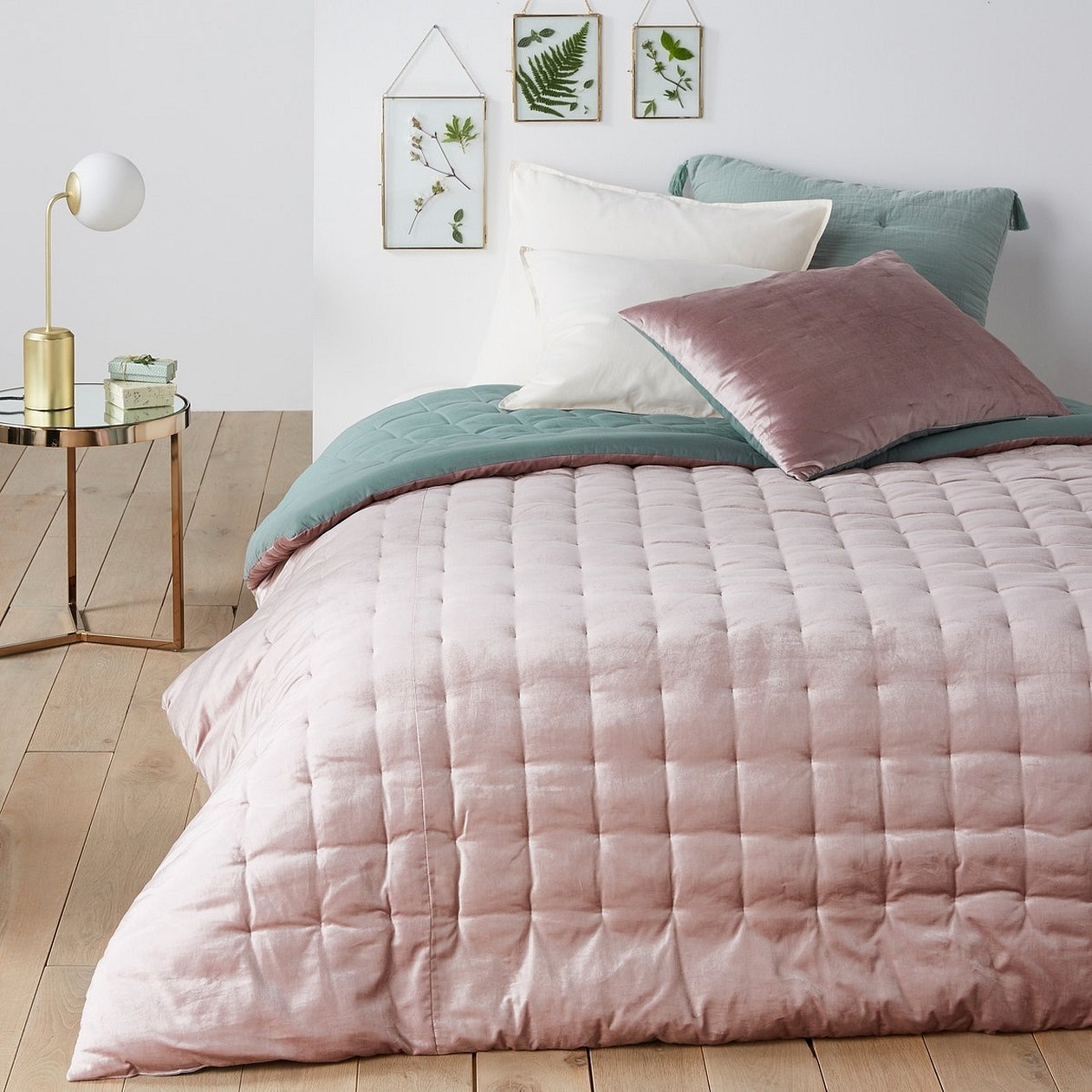
A quilted blanket cannot be washed without filling. For this reason, it is not suitable for use without a duvet cover. Sintepon does not tolerate frequent washings well, its adhesive base is destroyed, and the fibers lose volume.
Bedding is made from:
- cotton (calico, satin);
- thick silk;
- bamboo.
The main qualities that the material must meet:
- hygroscopicity;
- density;
- wear resistance.
Necessary tools
Sewing a blanket begins with measuring the bed. The product should completely cover its entire area and hang slightly on three sides. To sew a blanket, you will need:
- roulette;
- centimeter;
- awl;
- pins;
- a spool of thread with a needle for sewing;
- chalk or a sharpened piece of dry soap;
- sewing machine.
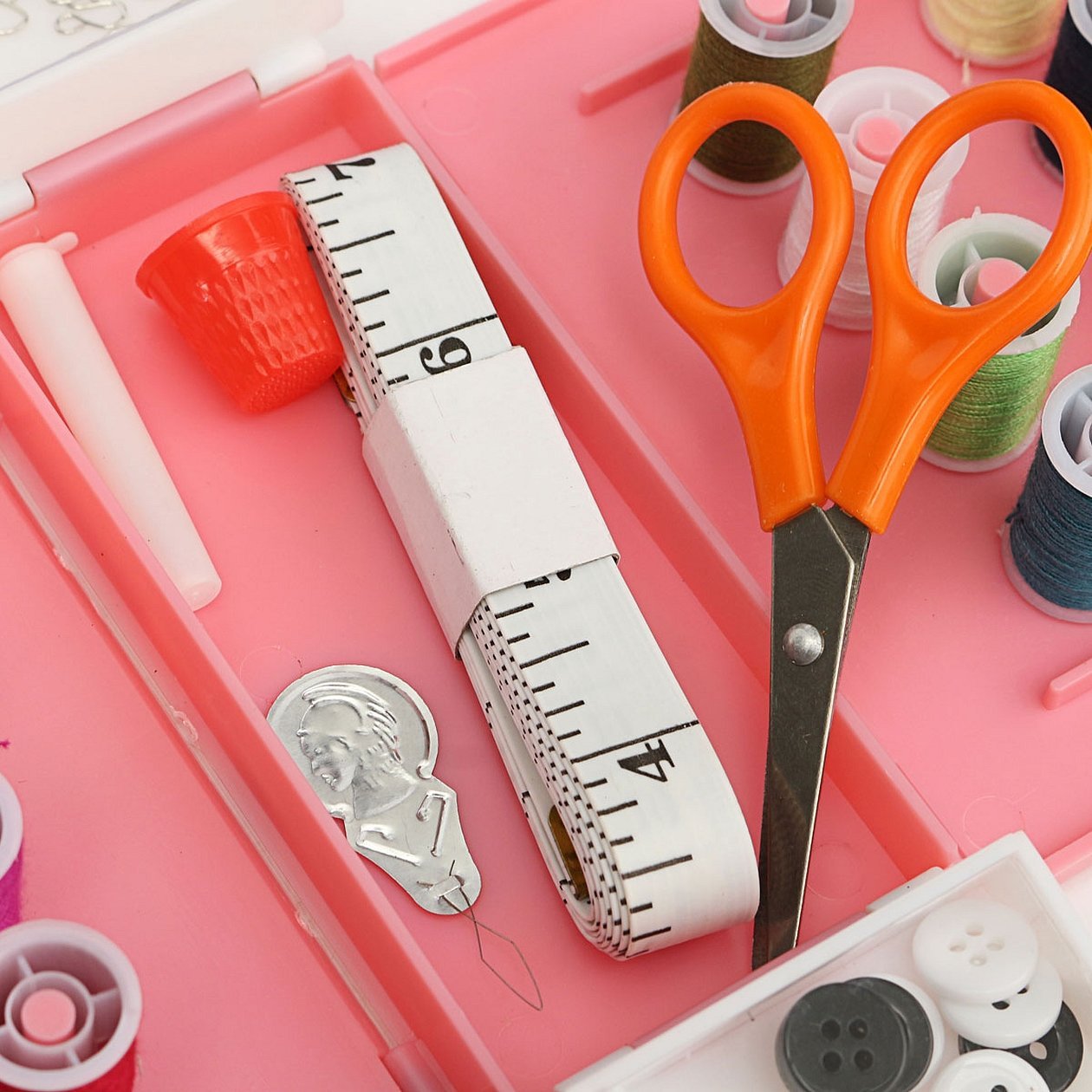
Cutting the material
The main lining fabric and the synthetic padding layer are cut to the same dimensions. Making some parts larger or smaller is labor-intensive and unnecessary work.
Please note! The main fabric is cut strictly along the thread. The required size is measured along the edge of the fabric, a cut is made, and then the thread must be carefully pulled out. The fabric is cut strictly along the resulting tightening.

If the top of the blanket is sewn from several parts, then all its parts are cut out, assembled into a single whole according to the pattern, and then the lining and interlayer are cut strictly according to the dimensions of the front side. The synthetic padding consisting of two strips is basted manually with threads before cutting.
How to sew a quilt with piping on the edges
The easiest way to make a blanket edging is from bias tape. You need to buy it based on the calculation: 2 perimeters of the product + 30% of this amount. This means that for a blanket 2.2 m by 2.2 m you will need (8.8 X 2) + 30% = approximately 23 m.
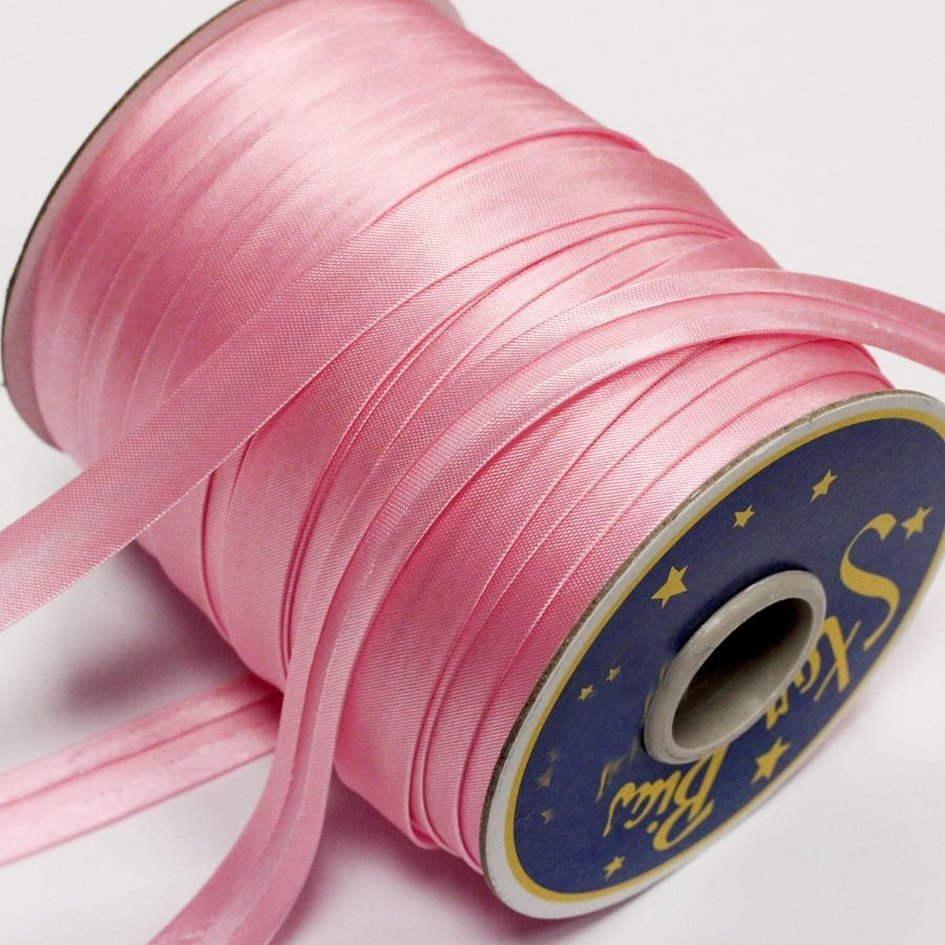
Step by step instructions:

- The bias tape is divided into two equal strips and sewn along the entire length.
- The front side, lining, and back side are folded on top of each other in the way the blanket should look when finished.
- Several fastening basting lines are placed through all three layers. Then, using a tape measure and chalk, the stitch pattern is applied to the front side.
- Then you need to quilt the fabric with synthetic padding.
- The product is aligned along the cuts so that all layers have a smooth, uniform edge.
- Along the entire perimeter at a distance of 0.5-0.7 cm, you need to stitch a securing line.
- The cut is covered with a finishing tape made from bias tape.
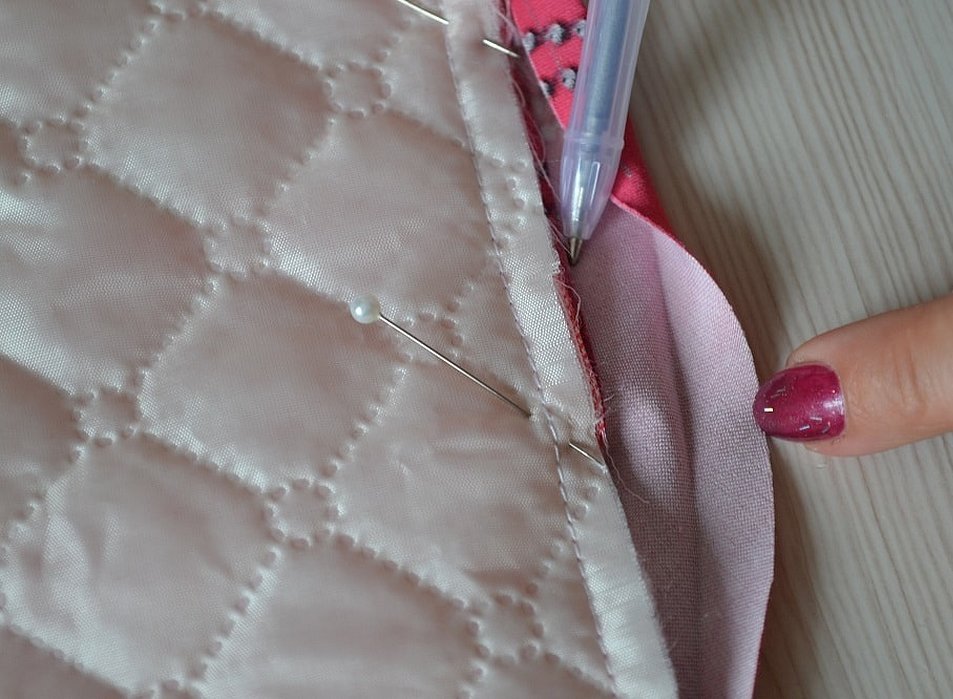
Important! Experienced craftswomen can do this with one line. For those who still have difficulty making a single line, it is better to secure the edging with two lines, that is, sew one side of the bias tape to the back, then the second to the front of the blanket.
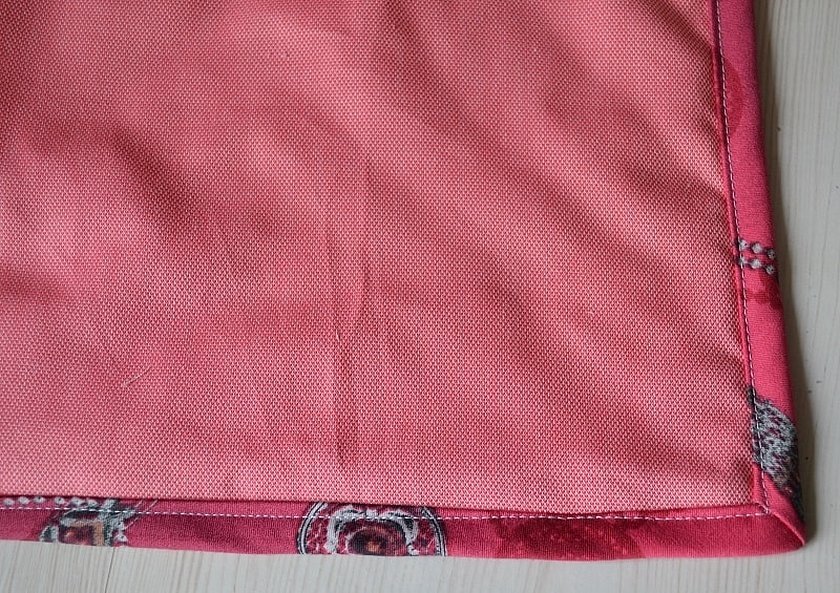
Pattern for quilting
The stitching can be any. The degree of its complexity depends on the experience of the craftswoman. The simplest and most common pattern is diamonds or squares. On the sides, each segment can have a width and height from 3 to 20 cm. It is better for a novice craftsman not to take on embroidering waves and zigzags on a blanket; straight lines are easier to sew. The biggest difficulty is pulling a large volume of material with padding polyester under the machine.
Please note! Even experienced craftsmen do not always know how to quilt a blanket on padding polyester on a machine. To prevent the product from deforming during sewing, the blanket is quilted from the center to the side cuts.
How to sew a baby blanket for discharge
It is easier to sew a baby blanket on padding polyester for a newborn baby in the form of a cover with filler. The bag, in which the interlayer will be inserted, is sewn from beautiful fabrics, decorated with lace.
It is convenient if the cover has a zipper on one side. Such a detail will allow you to remove the insert if you need to wash the product.
By machine or by hand
How to make a quilted fabric if the volume of the product does not allow it to be pulled under the sewing machine? In this case, you can fix all three layers manually. This is much easier than creating a stitch pattern on a machine. In this case, the blanket is sewn like this:
- All three components of the blanket (front part, filling, lining) are laid out on top of each other on the table.
- The attachment points are marked with chalk.
- A hole is pierced with an awl.
- Using a needle and thread, make several stitches through and through; you can sew small buttons on the front side at the attachment point.
How to stuff a pillow with your own hands
A home pillow can be filled with pieces of synthetic padding, holofiber, or cotton wool.
In addition to conventional materials, natural fillers of plant and animal origin can be used. These can be:
- buckwheat husk;
- rose petals;
- fleece;
- chicken or goose down.
Caring for a synthetic padding product
Blankets (covers) are washed separately from the synthetic padding insert. The mode is selected depending on the material from which they are sewn.
In other cases, bedding is washed on a gentle cycle with water temperature from 30 to 40 °C. Gentle gels are used. Aggressive powders are harmful to synthetic padding.
You can sew bedding with your own hands. A beautiful thing requires time and diligence. The first time you do a stitch is difficult because of the labor-intensive process. If you follow the technology, the result will please not only the creator, but the whole family.



